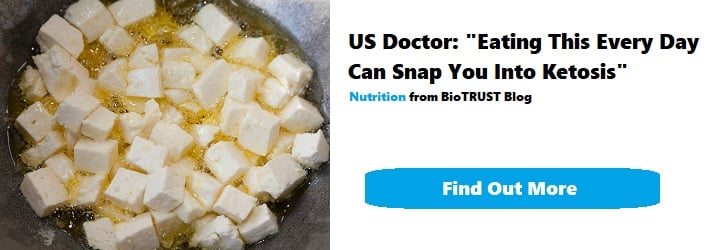The 4 Must-Have Supplements for People Over 40

There are many facets of getting older that downright suck. And it’s easy to be pessimistic about aging. After all, a number of common age-related issues seem virtually inevitable, including skin issues, joint discomfort and stiffness, cognitive issues, decreased energy levels, hormonal decline, reduced endurance, feeling blue and moody, loss of muscle tone, slowed metabolism, and weight gain.
Wow, talk about a gloomy introduction! It’s not all bad news, though. We can be much more optimistic about healthy aging, especially considering the growing amount of research every year. Various lifestyle factors are well within our control that can help protect our youth and vitality, including optimal nutrition, properly planned exercise programming, stress management, sleep hygiene, social support, and more.
In addition, research in the area of dietary supplements and healthy living continues to expand. Now more than ever, we have a good idea of what ingredients are most effective for promoting healthy aging.
Which brings us to our top 4 “must-have” supplements for people over 40:
4 Supplements For People Over 40
1. Protein Supplement
Arguably one of the greatest challenges we face as we get older is the progressive, seemingly inevitable age-related loss in muscle mass. After the age of 30, adults lose an estimated 6 – 8% of their muscle mass per decade.1 This can have serious consequences. Over time, it contributes to decreased strength, balance, mobility, and physical function, as well as increased body fat, a greater incidence of falls, several age-related health conditions, reduced independence, and eroded overall quality of life.2–4
Certainly, a sedentary lifestyle plays a substantial role (i.e., “use it or lose it”). And without a doubt, resistance training (i.e., lifting weights) is the most potent stimulus for staving off age-related losses in muscle mass.5 Yet, inadequate consumption of protein can also accelerate muscle loss. And as we get older, we tend to consume a suboptimal amount of protein, which contributes to age-related muscle loss.6
On top of that, as we age, it appears we have a reduced sensitivity to the effects of dietary protein. In other words, more protein is needed to help build and maintain muscle mass.7,8 In fact, it may take up to 67% more protein per meal for older adults to stimulate muscle protein synthesis (the process of repairing and building muscle) to a comparable level as young adults.
Clearly, optimizing protein intake along with regular weight training are crucial, highly effective strategies to mitigate the age-related decline in muscle mass. Generally speaking, a good recommendation is to consume about 1.5 – 2.0 grams of protein per kilogram (kg) per day with at least 0.4 grams of protein per kg per meal. Because this can present a considerable, costly challenge to most, a protein supplement is highly recommended. While there are many good choices, a high-quality milk-based protein (e.g., whey) may be optimal because of its amino acid profile (namely, its leucine content).3
2. Digestive Support
As you’ve gotten older, have you felt like food affects you a little bit differently? Maybe you’re a bit more sensitive or have to be more careful with your food choices. Otherwise, you deal with unfriendly consequences like gas, bloating, digestive discomfort, or occasional constipation/diarrhea. Perhaps you’ve even noticed certain foods negatively affect your joints, skin, mood, and ability to focus and think clearly.
These are all signs that your digestive system isn’t as bulletproof and efficient as it once was. Believe it or not, as we get older, we produce fewer digestive enzymes, which are responsible for breaking down the food we eat into usable nutrients our bodies can absorb. In fact, Dr. Edward Howell, a noted pioneer in the field of enzyme research, coined the Enzyme Nutrition Axiom. This basically states that age is inversely correlated with enzyme production. And as we get older, the organs responsible for producing digestive enzymes become less efficient.9,10
Certainly, managing stress (which can inhibit the body’s ability to “rest and digest”11) and eating more raw, whole, enzyme-rich plant-based foods can support healthy digestion. Having said that, most of us will greatly benefit by complementing healthy lifestyle choices with a broad-spectrum digestive enzyme supplement that contains a variety of enzymes that breakdown proteins (called proteases), fats (called lipases), and carbohydrates, including difficult-to-digest fibers and FODMAPs.
Of course, no discussion of digestive health is complete without the mention of probiotics and prebiotics. While there are numerous factors that influence the balance of gut bacteria, studies show that, as we age, there’s an unhealthy shift in the microbiota called dysbiosis. This refers to an unhealthy imbalance of bacteria in the gut flora, characterized by excessive levels of pathogenic bacteria, inadequate amounts of commensal and probiotic bacteria, and/or reduced bacterial diversity.
With a systematic impact, affecting digestion, immunity, cognitive health, metabolic function, and more, dysbiosis has been linked to a malady of age-related conditions.12–14 Along those lines, supplementation with probiotics and prebiotics, which have together been described as the “fountain of life” may be very helpful in preventing the disruption of the gut environment.
3. Omega-3
When it comes to healthy aging, one of the most important, effective tools in the supplement toolbox is the long-chain omega-3 fats EPA and DHA, which are well-known for their beneficial effects on:
- Heart health15–17
- Brain health, cognitive function, and mood18–23
- Eye health and vision24–26
- Skin health27,28
- Immune function29
- Metabolic function and body composition30–32
- Promoting a healthy inflammatory response33
EPA and DHA may also exert an anti-aging effect at the cellular level. As a normal cellular process, telomere length (a key marker of biological age) shortens with age. Accelerated telomere shortening is associated with early onset of many age-related health problems.34 Interestingly, telomere shortening is not inevitable. In fact, telomeres can also lengthen.
Research has shown that diets rich in the omega-3 fats EPA and DHA can protect, and in some cases, lengthen telomeres. There’s also some evidence that shows supplementation with EPA and DHA increases the activity of telomerase, an enzyme that maintains, lengthens, and restores telomeres.35–37
Conversely, excess omega-6 intake has been associated with shorter telomere lengths and accelerated aging.38,39 Along those lines, it appears that the ratio of omega-6 to omega-3 fats may be where the magic happens: Telomere lengths increase with decreasing n6:n3 ratios. In other words, increasing the intake of omega-3 fats (through supplementation and eating fatty fish) while reducing intake of processed foods (which contain refined omega-6-rich vegetable/seed oils) may have a positive impact on cellular aging.
The best supplemental sources of EPA and DHA are derived from fatty fish (e.g., salmon, sardines, herring, anchovies). Krill is also an option, and it has the added benefit of providing the antioxidant astaxanthin, which may have additional anti-aging properties.28,40 If you prefer a plant-based source of EPA and DHA, your best bet is an algae-based oil. Other plant-based foods contain the omega-3 fat alpha-linolenic acid (ALA), which has a very poor conversion rate (<10%) to EPA and DHA.41
4. Healthy Aging Support
Of course, this list wouldn’t be complete without covering the broad category of healthy aging (i.e., anti-aging) supplements. While there are many products touted for their potential youth-preserving benefits, here are a handful of research-backed ingredients that sit at the top of the list:
- Curcumin— Our first heavy hitter is curcumin. Curcumin is a potent antioxidant derived from the popular Indian spice turmeric—an exotic, bright yellow plant from the ginger family that has been used for thousands of years for medicinal purposes. Its effectiveness has been highlighted in over 3,000 scientific publications dealing with turmeric in just the last 25 years alone. Curcumin has been shown to protect against the harmful effects of aging by scavenging free radicals, lowering oxidative stress, and reducing levels of several key biomarkers associated with aging and inflammation.42,43
The trouble is curcumin has poor solubility and absorption. As a result, unrealistically high amounts of standard curcumin are often required to obtain the health benefits. However, in a recent well-controlled human clinical trial, researchers found that absorption of a specific form of curcumin called CurcuWIN® was 46 times greater than standard curcumin, providing longer lasting action.44
- Glutathione— Glutathione is the body’s “master antioxidant,” boosting the body’s natural defenses against stress and dangerous toxins. While the body naturally produces glutathione, the unfortunate reality is that levels plummet with age.
Over 100,000 peer-reviewed scientific articles have addressed this powerhouse antioxidant, and researchers are recognizing that a frightening number of people are deficient, which weakens the immune system; exposes you to excessive oxidative stress; leaves you susceptible to dangerous toxins, stress, and illness; and impairs detoxification.
The good news is that research shows a specific form of glutathione called Setria® can elevate body stores, reduce oxidative stress, and bolster the body’s internal defense network.46
- CoQ10— CoQ10 is a powerful antioxidant and critical component of healthy mitochondria (the “power plants” of cells), which are responsible for producing 95% of the body’s energy. The more effective and efficient your mitochondria, the healthier, more vibrant you’ll feel.
Unfortunately, like most things in the body, mitochondria decrease in both efficiency and number—by as much as 50%. Even more, the body’s levels of CoQ10 can be cut in half with age, making supplementation important for mitochondrial health, a key component of healthy aging.47,48
All of these ingredients can be found in our top recommended choice, Ageless Body.
Protect Your Youth
Now more than ever, we’re seeing a paradigm shift when it comes to healthy aging. Research advocates whole-foods-based, high-protein diets combined with brief high-intensity interval training and resistance training to promote optimal body composition and health as we age.52 Along with that, copious amounts of research show anti-aging promise for a variety of dietary supplements, which should be used in combination with an overall healthy lifestyle to help protect your youth.








